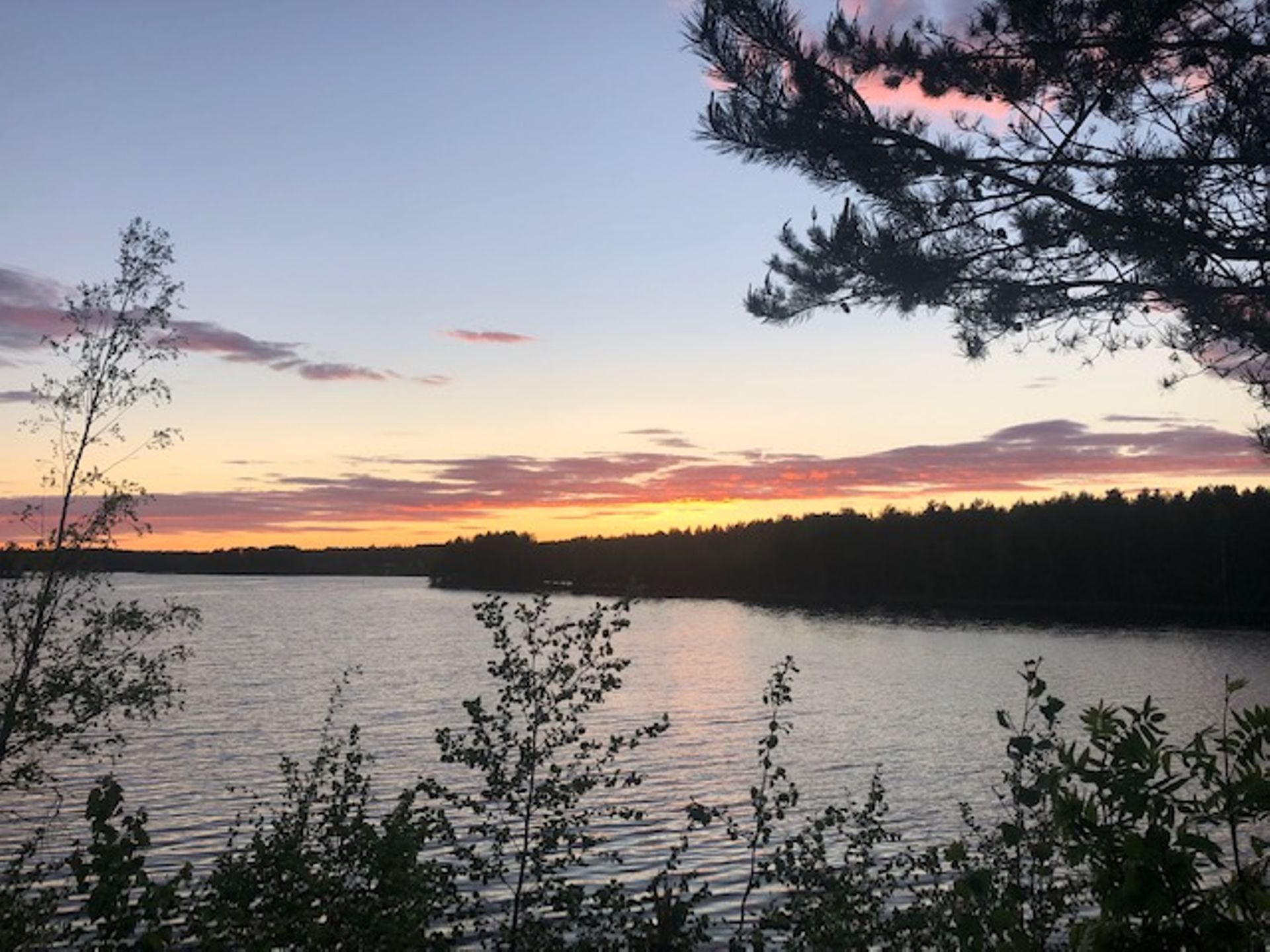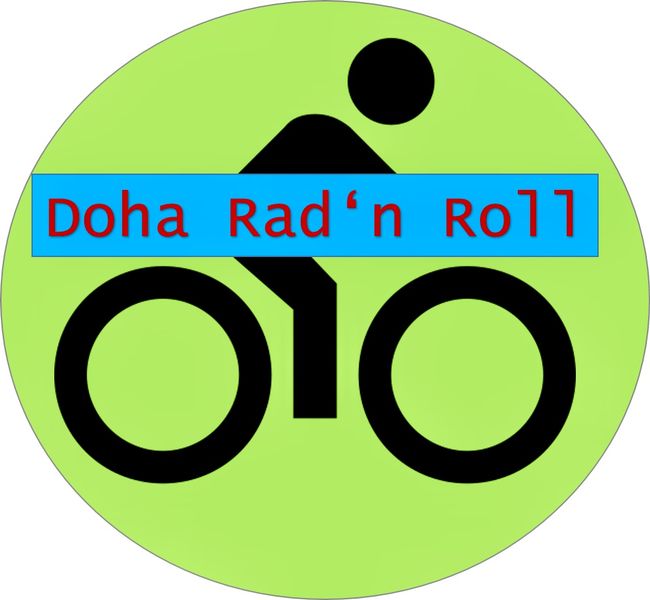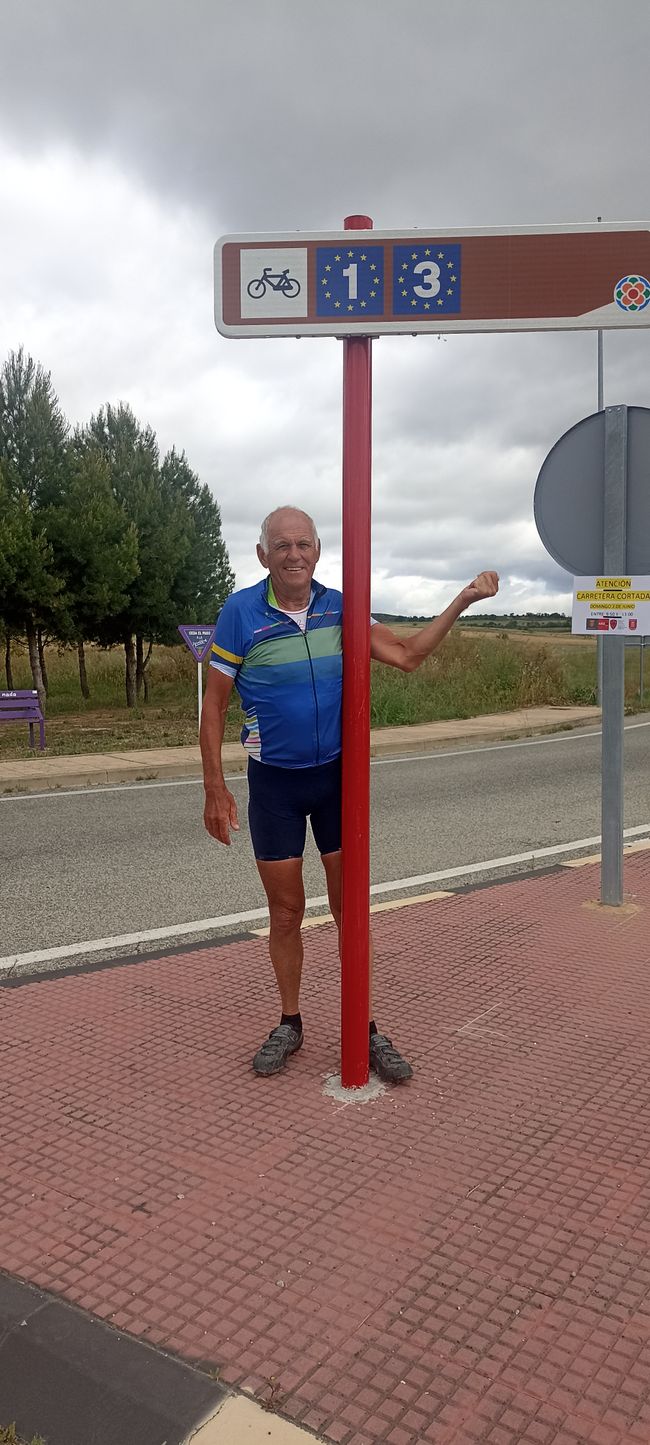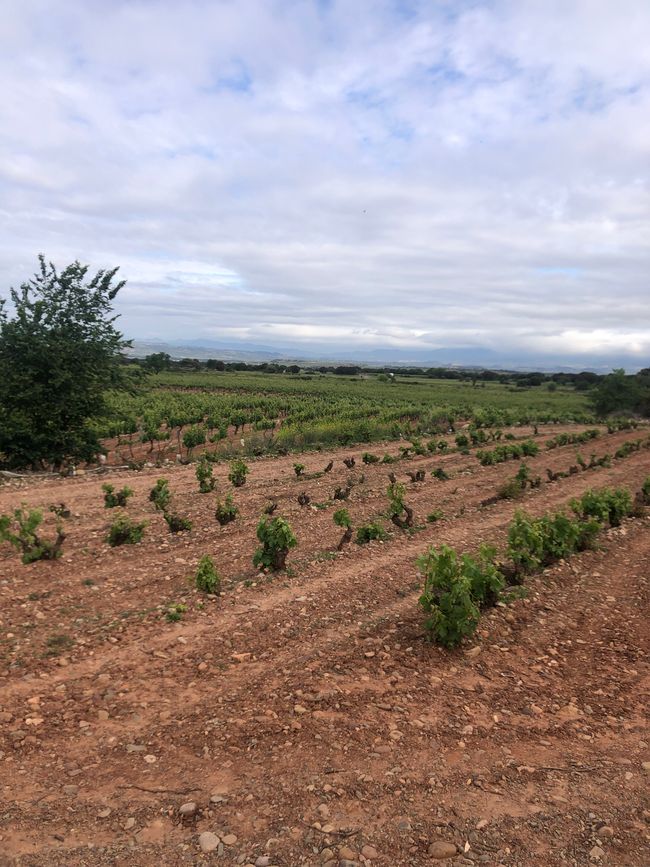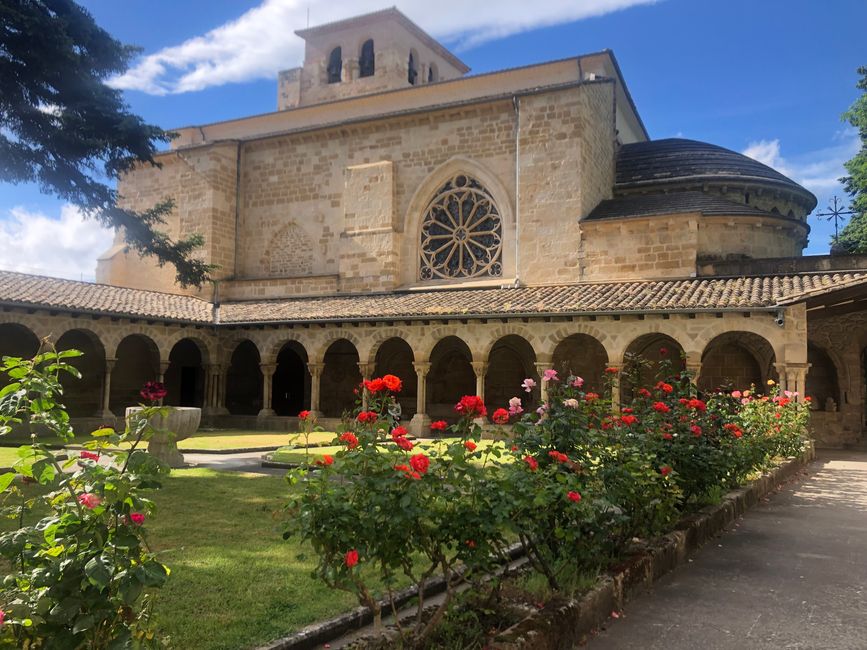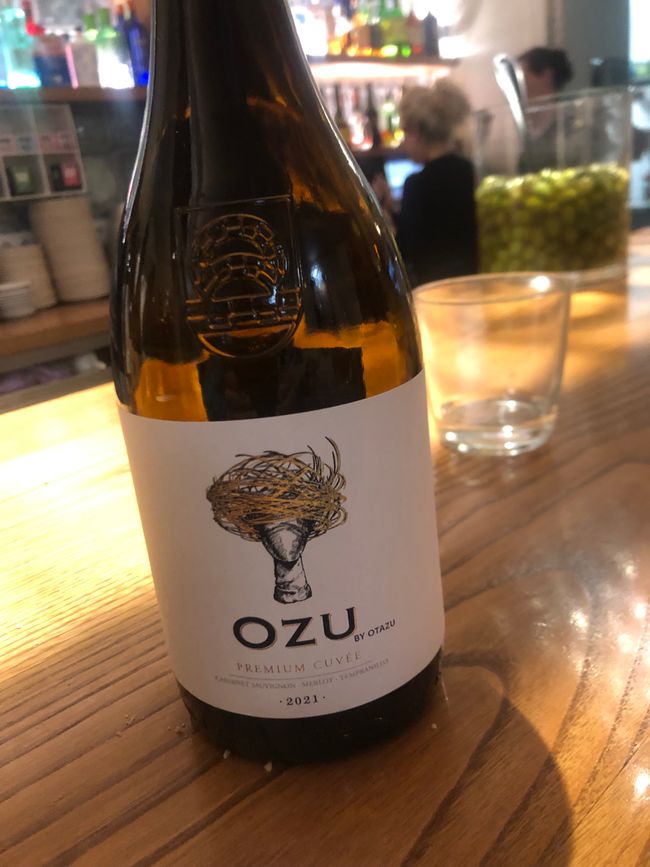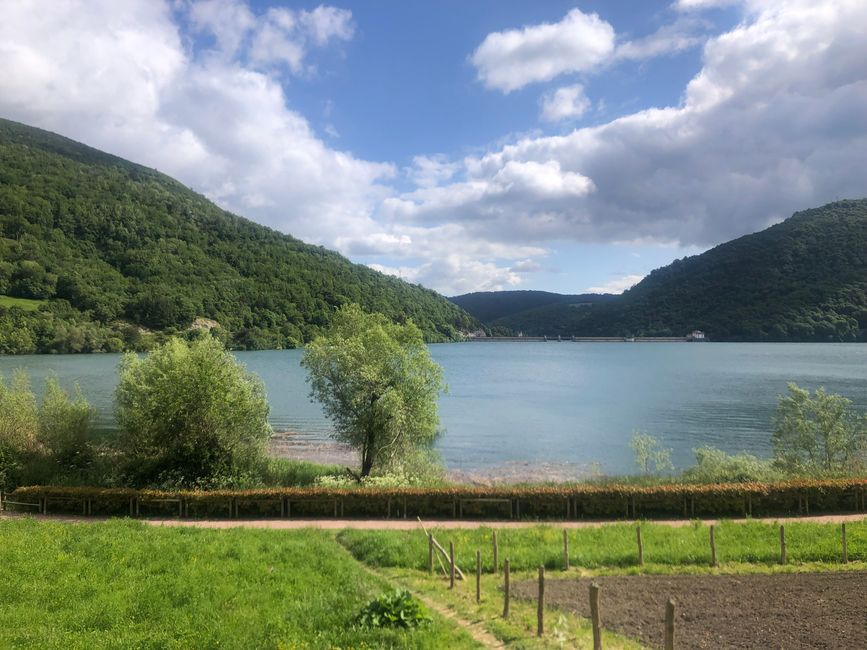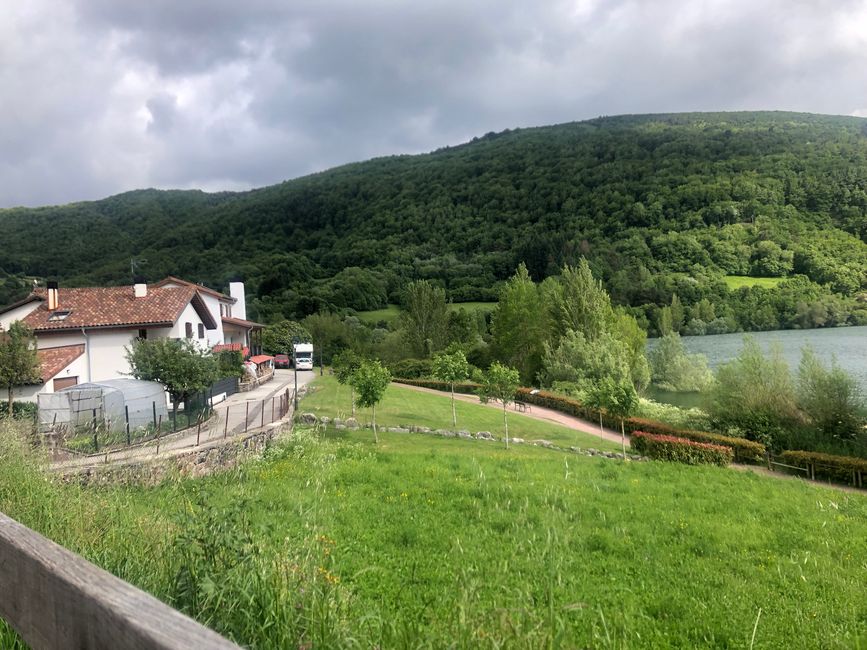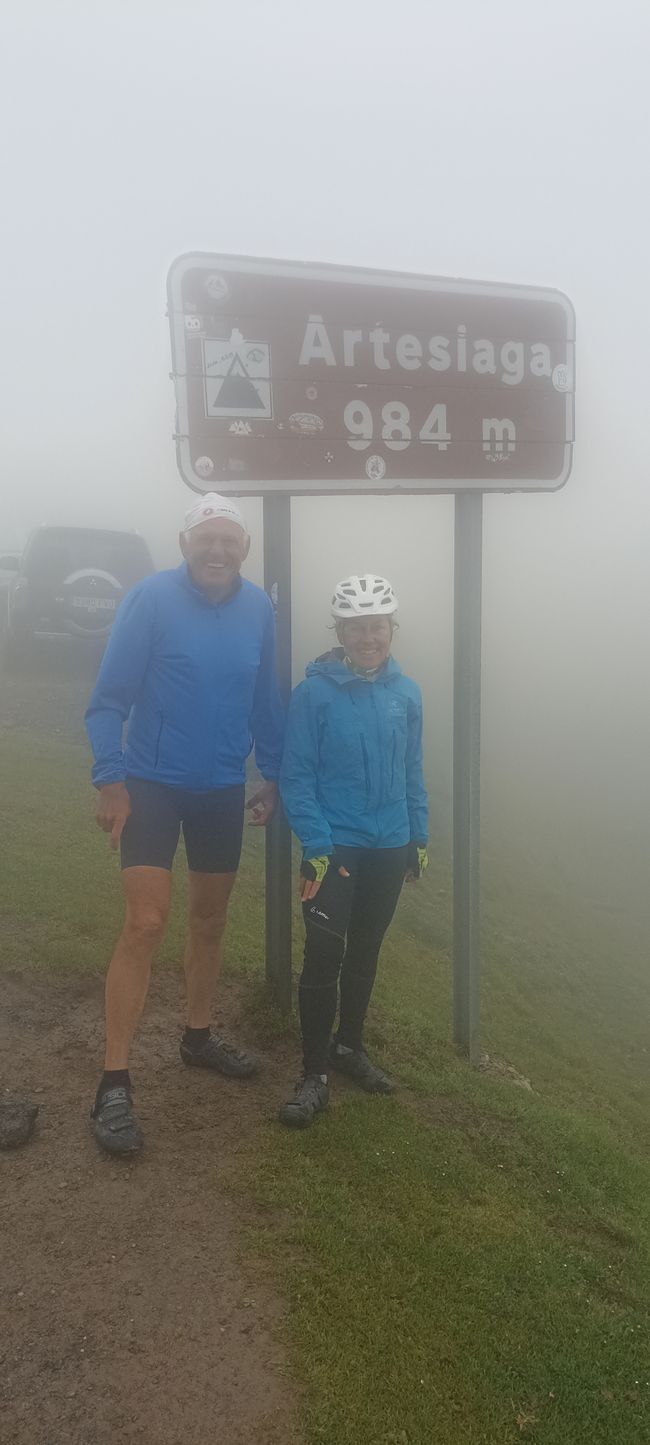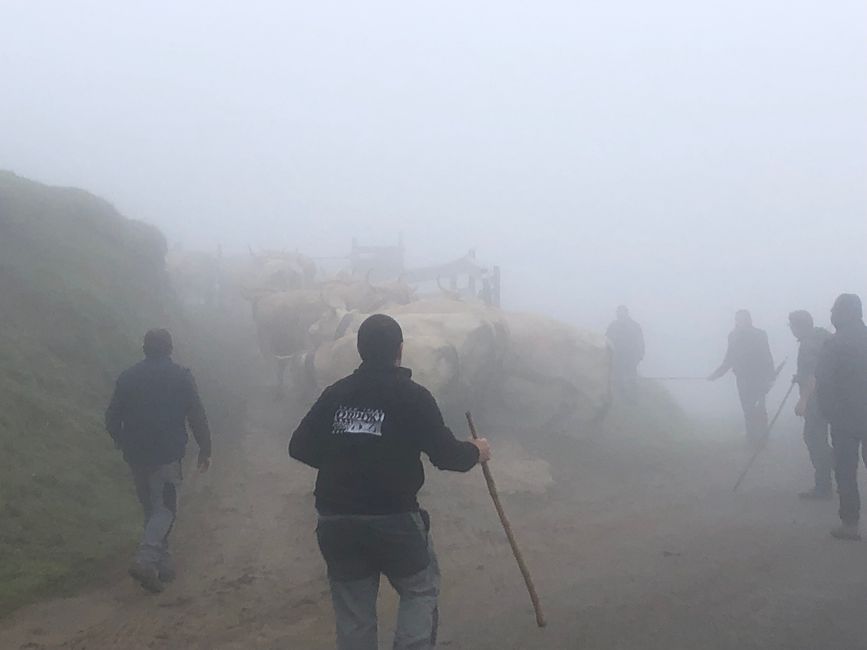Rioja and Navarre
ꯐꯣꯉꯈ꯭ꯔꯦ꯫: 02.06.2024
ꯅꯤꯎꯖꯂꯦꯇꯔꯗꯥ ꯁꯕꯁ꯭ꯛꯔꯥꯏꯕ ꯇꯧꯕꯤꯌꯨ꯫
EV Cycling Day 23 (30 May): Hormillo - Logroño - Estella 80 km
From our motorway service station we are on the N 120 and quickly warm up in the cool morning temperatures with a long climb. The main road ends at Navarette and the rest of the route is a little difficult, also because a lot of things are new and unfinished due to the motorway construction. We take the wrong exit at a roundabout and suddenly find ourselves on the ramp to the motorway. Too late to turn back. Luckily, we drive downhill on the wide shoulder with a slightly queasy feeling. The Spanish drivers are obviously taking it in their stride, no one is honking or signaling. After 1.5 km we are over it and on good cycle paths we reach Logroño, the capital of Rioja. We stop by chance at a café run by a man from Cologne who came here 20 years ago as a Siemens fitter and stayed. He now serves Spanish beer in Kölsch glasses!
We feel fit enough now to take on the steep climb to the village of Viana, even though the main road runs alongside. Many pilgrims are sitting in the beautiful alleys, enjoying the atmosphere after the exertions of the Camino. We still have a few meters of elevation to climb before the Rioja passes into Navarra. With the sky covered in clouds, the Ebro valley is difficult to see. The landscape remains hilly and strenuous. The last few kilometers to Estella-Lizarra are downhill. Despite the temperature and a strong wind, we decide to camp as planned. Dominique immediately notices that we had already been to this campsite six years ago when we (failed) tried to travel with the camper van. There are many pilgrims in the village and accordingly many albergues and restaurants. In one of them we also enjoy a good meal and a very good Navarra.
Wine recommendation: Ozu by Otazu Premium Cuvee 2021 approx. 14 €
EV Cycling Day 24 (31 May)
Estella-Lizarra - Pamplona - Eugi 80 km
May is coming to an end and so is the Spanish part of our cycling trip. Today we have another tough piece of work ahead of us, as we are heading to the Pyrenees. The hardest part comes earlier, however. From Puenta de la Reina we have to overcome 300m, and today it is a cool 15 degrees and there is a strong headwind. The El Perdon (that is the name of the crossing) is merciless. After this is done, it is not far to Pamplona, where we enjoy a cortado at the Plaza de Castilla before heading towards the Pyrenees. The first 15 km are slightly uphill, then we turn onto a mountain road to Eugi. Another 10 km and a few climbs and we are sitting on the terrace of the Hostal Exteberri with a well-earned beer (Dominique at the Paulaner!)
EV Cycling Day 25 (1 June): Eugi (E) - St Jean de Luz (F) 100 km
It is cloudy and cool in the mountains and we hope to get over the pass dry. After 5 km we turn onto a side road with almost no traffic. It is drizzling slightly, getting cooler and cooler and the higher we go the thicker the fog becomes. Dominique is no longer visible because of the fog. It gets increasingly steeper, the climb on the last kilometer is between 12 and 15%. At the top of the pass at almost 1000 m, unfortunately, there is not much to see of the surroundings. Our personal Tourmalet! The shepherds tell me (Dominique) to go behind them quite sternly because a herd of cows is being driven to the upper Alp. A shepherd takes the passport photo! 16 km (30 min) descent await us and we have to wrap up warmly so as not to get completely cold. In the valley there are villages, several roads and traffic as well as a café. Time for a second breakfast. After that, with some effort, we find the old railway line Via Verde del Bisoca, which we ride 36 km on to Irun. A good half of it is asphalted, the rest is mostly passable. One section is closed due to construction work, but by carrying the bikes and luggage we can get through quite well on a Saturday when the construction work is suspended. A little later we are standing in front of a closed tunnel, an alternative involves a big detour. So we ignore the barrier and slowly feel our way forward. There has been a rockfall in the middle of the tunnel, which we can pass safely and continue our journey on the other side as planned. We safely reach Irun, the border town with France and Spain. We reach Hendaye in France via a bicycle bridge. A little later, after a detour with a 16% ramp (😉), we are in St Jean de Luz, where we go to the hotel because of possible rain during the night.
Conclusion Spain:
We have now cycled for more than two weeks from the Atlantic coast on the Portuguese border in the very south to the Atlantic on the French border. 1300 km, mainly in a northerly direction. This country has so many cultural sights, churches, castles and monasteries that after a while it is almost impossible to take it all in and process it all, even if the speed of the bike gives us time to do so. At the end of each stage, a beautiful place awaited us with a cathedral, several other churches, Plaza Mayor or España and Palacios. We were able to get used to the late Spanish mealtimes, as this almost always left enough time for a walk around the city. The well-known siesta time between 2 p.m. and 6 p.m. and the pulsating and loud life in the evenings never ceased to amaze me.
We were lucky with the weather, the hot days we had feared in Extremadura didn't happen and we didn't feel the loneliness that had been predicted. Nature showed itself at its best at this time of year: lush meadows, blooming flowers and bushes of all kinds that exuded their fragrance. On the railway lines we were sometimes unable to drive through the flowers.
There were large distances between individual villages, and we could easily imagine that to the left and right of the roads there was 'España vacia' (completely empty). We wonder who cultivates these areas and how.
We cycled through the best wine-growing regions in Spain, starting from Ribera del Guadiana, passing through Toro, Ribera del Duero, Cigales, Rioja and Navarra. We already knew Ribera del Duero very well, and we will look at Toro and Navarra again when we get home.
The paths were much better than expected, which was also due to the fact that we replaced the suggested gravel paths with roads. (Thanks Harald 💕) Due to the expansion of the motorways, many national roads are hardly used anymore. Spain is simply so big and has so much space that the roads are usually wide and the climbs usually stretch for several kilometres and are therefore less steep. Only east of Burgos was there a lot of long-distance traffic, but thanks to a continuous shoulder and considerate driving, we felt safe. In the cities, a lot of investment has been made in cycle paths in recent years, so that you can cycle safely through city centres. Switzerland and Germany could take a model from this!
In our experience, Spaniards are considerate drivers, they overtake cyclists at a considerable distance, and trucks also slow down for them. They always stop at pedestrian crossings.
Spaniards are friendly and helpful. A 'Hola' or 'Buenos dias' is a given. If we stop at a corner looking for something, someone will definitely ask and show us the way. In Spanish! English is not popular. If someone can speak English, he or she is not easy to understand. The difference between first and third floor is barely noticeable.
An absolute highlight in terms of hospitality and warmth was our visit to Magdalena and Martin in the mountain village of La Garganta at an altitude of 1100 m in Extremadura. This visit will remain unforgettable.
We are a little sad that the Spanish part is now coming to an end. But EV 1 continues in France, which I (Dominique) am looking forward to. And at some point we want to go home again.
ꯅꯤꯎꯖꯂꯦꯇꯔꯗꯥ ꯁꯕꯁ꯭ꯛꯔꯥꯏꯕ ꯇꯧꯕꯤꯌꯨ꯫
ꯄꯥꯎꯈꯨꯝ (1)
Hallo Ihr beiden,
wir bestaunen Eure Tour mit Euren spannenden Erlebnissen und den Torturen.
Mit den tollen Berichten fühlt es sich fast an, als wäre man mit dabei.
Wir waren heute bei tollem Panorama ein paar km, auf die Dauer etwas mühsam, am kretischen Sandstrand unterwegs.
Und waren uns einig, dass man das leicht toppen kann, wenn man zwei voll bepackte Fahrräder mit durch den tiefen Sand schiebt.
Für Euch wäre es sicher nichts besonderes und uns gings bei dem Gedanken etwas besser ...
Liebe Grüße aus Kreta
Ute + Sawa
